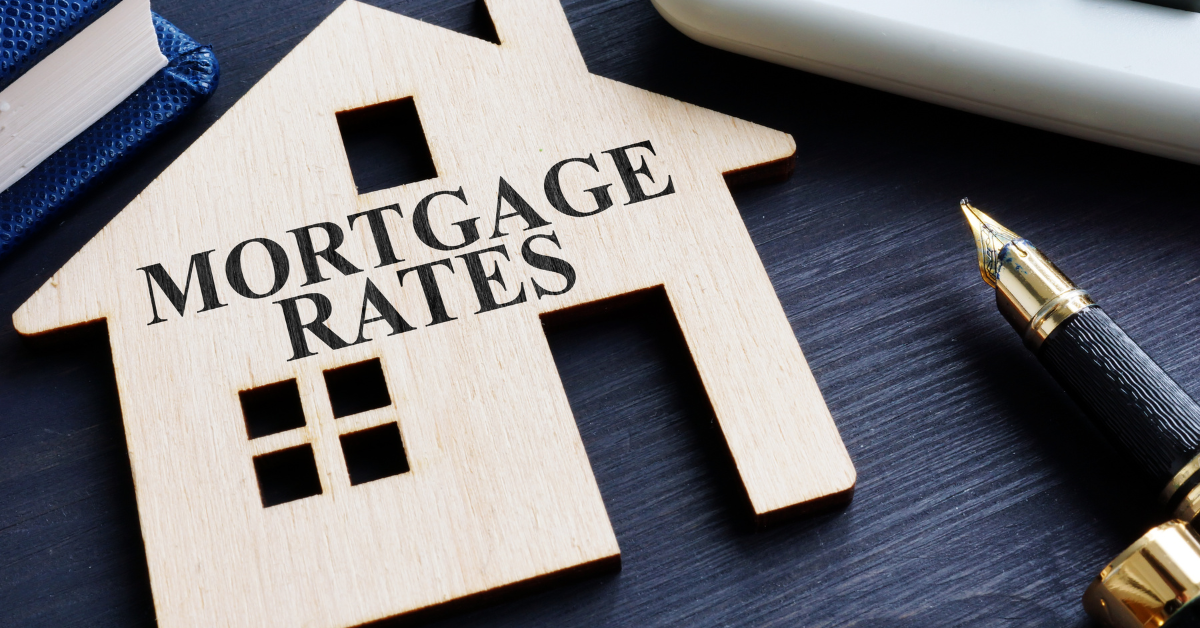Conversion in progress ...
Please wait while we generate your PDF
The Complete Mortgage Guide for Home Buyers

Understanding Mortgages: The Basics
For first-time homebuyers and those looking to upsize, wrapping your head around mortgage basics isn't just smart—it's essential. It's akin to learning the rules of the road before taking the driver's seat; it empowers you to make informed decisions, navigate turns and avoid bumps on your path to homeownership.
Our journey through the mortgage landscape will cover everything from the ground up. We'll delve into the different types of mortgages available, unravel the mysteries of interest rates, and decipher the terms of loans. We'll also explore the significance of down payments and lift the veil on government-backed programs designed to give homebuyers a leg up.
Whether you're a first-time buyer wide-eyed with wonder or an upsizer ready for your next chapter, understanding these key areas will arm you with the knowledge to choose a mortgage that fits like a glove. So, buckle up! You're about to embark on a thrilling ride through the world of mortgages.
Our journey through the mortgage landscape will cover everything from the ground up. We'll delve into the different types of mortgages available, unravel the mysteries of interest rates, and decipher the terms of loans. We'll also explore the significance of down payments and lift the veil on government-backed programs designed to give homebuyers a leg up.
Whether you're a first-time buyer wide-eyed with wonder or an upsizer ready for your next chapter, understanding these key areas will arm you with the knowledge to choose a mortgage that fits like a glove. So, buckle up! You're about to embark on a thrilling ride through the world of mortgages.

Types of Mortgages Available
Navigating the sea of mortgages can feel like decoding the world's most complex coffee order. Let's simplify it.
First up, we have the Fixed-Rate Mortgage - the "classic vanilla" of home loans. It offers a consistent interest rate and monthly payments for the life of the loan, typically 15 to 30 years. It's the financial equivalent of a comfortable old sweater: predictable and stable.
Then there's the Adjustable-Rate Mortgage (ARM). Think of it as the mood ring of mortgages; it changes colors based on market conditions. It starts with a fixed interest rate for a set period, then adjusts at intervals. It's perfect for those who anticipate a move or pay increase down the line but comes with its share of unpredictability.
For those who prefer a "less is more" approach, Interest-Only Mortgages allow you to pay just the interest for a set period, before switching to paying both principal and interest. It's akin to paying minimum on your credit card - less upfront, but more over time.
Venturing into government territory, we find FHA, VA, and USDA Loans. FHA loans are friendly to first-timers with lower down payments. VA loans cater to veterans, offering benefits like no down payment. USDA loans are for rural homebuyers, emphasizing location and income level.
Lastly, for those buying a mansion or just a very pricey pad, Jumbo Loans come into play. They're like ordering off the secret menu - for homes that exceed the limits set by government-backed loans, requiring stellar credit and a substantial down payment.
Each mortgage type has its unique blend of benefits and considerations, much like choosing between a latte, cappuccino, or the mysterious flat white.
First up, we have the Fixed-Rate Mortgage - the "classic vanilla" of home loans. It offers a consistent interest rate and monthly payments for the life of the loan, typically 15 to 30 years. It's the financial equivalent of a comfortable old sweater: predictable and stable.
Then there's the Adjustable-Rate Mortgage (ARM). Think of it as the mood ring of mortgages; it changes colors based on market conditions. It starts with a fixed interest rate for a set period, then adjusts at intervals. It's perfect for those who anticipate a move or pay increase down the line but comes with its share of unpredictability.
For those who prefer a "less is more" approach, Interest-Only Mortgages allow you to pay just the interest for a set period, before switching to paying both principal and interest. It's akin to paying minimum on your credit card - less upfront, but more over time.
Venturing into government territory, we find FHA, VA, and USDA Loans. FHA loans are friendly to first-timers with lower down payments. VA loans cater to veterans, offering benefits like no down payment. USDA loans are for rural homebuyers, emphasizing location and income level.
Lastly, for those buying a mansion or just a very pricey pad, Jumbo Loans come into play. They're like ordering off the secret menu - for homes that exceed the limits set by government-backed loans, requiring stellar credit and a substantial down payment.
Each mortgage type has its unique blend of benefits and considerations, much like choosing between a latte, cappuccino, or the mysterious flat white.

Deciphering Interest Rates and Loan Terms
Ever feel like understanding mortgage interest rates requires a decoder ring? Let's crack the code together. Interest rates on mortgages are influenced by a variety of factors, including economic conditions, central bank policies, and your credit score. Essentially, they're the price you pay for borrowing money. The lower the rate, the less you pay over the life of the loan, making those monthly payments more palatable.
Now, dive into the pool of fixed and variable interest rates. Fixed rates are like your reliable friend who never changes, offering stability and predictability over the life of the loan. Your monthly payments remain constant, allowing you to budget with ease. Variable rates, on the other hand, are the wild card of the mortgage world. Initially lower than fixed rates, they fluctuate with market conditions, which can lead to unpredictable monthly payments.
Lastly, let's talk time - mortgage loan terms, that is. Typically, you're looking at 15 or 30 years. Opting for a 15-year term means higher monthly payments but less interest paid over time. It's the financial equivalent of ripping off the Band-Aid. A 30-year term, however, spreads payments out, reducing the monthly hit but increasing the total interest paid.
In summary, choosing the right mortgage involves understanding how interest rates work, the differences between fixed and variable rates, and how the loan's term affects your financial future. It's a balance between what you can afford monthly and how much you're willing to pay over time. Choose wisely!
Now, dive into the pool of fixed and variable interest rates. Fixed rates are like your reliable friend who never changes, offering stability and predictability over the life of the loan. Your monthly payments remain constant, allowing you to budget with ease. Variable rates, on the other hand, are the wild card of the mortgage world. Initially lower than fixed rates, they fluctuate with market conditions, which can lead to unpredictable monthly payments.
Lastly, let's talk time - mortgage loan terms, that is. Typically, you're looking at 15 or 30 years. Opting for a 15-year term means higher monthly payments but less interest paid over time. It's the financial equivalent of ripping off the Band-Aid. A 30-year term, however, spreads payments out, reducing the monthly hit but increasing the total interest paid.
In summary, choosing the right mortgage involves understanding how interest rates work, the differences between fixed and variable rates, and how the loan's term affects your financial future. It's a balance between what you can afford monthly and how much you're willing to pay over time. Choose wisely!

The Down Payment Dilemma
Let’s break it down, shall we? A mortgage is essentially a fancy term for a loan specifically used to buy a home. Think of it as the bank spotting you a large amount of cash to snag your dream home, with a promise from you to pay it back over a set period, usually 15 to 30 years, with interest.
Now, onto the components of a mortgage, often referred to by the acronym PITI, which stands for Principal, Interest, Taxes, and Insurance. The principal is the hefty sum you borrowed to purchase your home. Interest is the bank’s way of saying, “thank you for letting us lend you a ton of money,” calculated as a percentage of the principal. Taxes are paid to the local government and are often rolled into your mortgage payment, ensuring you don’t forget to support your community. Insurance includes homeowners insurance (to protect your property against disasters) and possibly private mortgage insurance (PMI) if your down payment was less than 20%, protecting the lender in case you default on the loan.
The legal implications of a mortgage are nothing to scoff at, with the most significant being that the lender holds a lien on your property until the loan is paid in full. This means if you decide to turn your payments into an optional chore, the lender has the right to take over your property through foreclosure.
Understanding the basics of a mortgage can demystify the process and set you on the path to homeownership with confidence—and a dash of wisdom.
Navigating the path to homeownership can often feel like attempting to solve a Rubik's Cube—just when you think you've got it, there's another twist. Enter the down payment: that initial chunk of cash that not only unlocks the door to your potential home but also significantly influences your financial journey thereafter.
The Importance of Down Payments
The down payment is the superhero of the mortgage world—it lowers your monthly payments, reduces the interest you'll pay over the life of the loan, and can even sway sellers in competitive markets. Think of it as the financial equivalent of a first impression; the more you put down, the more seriously you're taken.
Strategies for Saving
Saving for a down payment might seem as daunting as climbing Everest in flip-flops, but with the right strategies, it's entirely achievable. Budgeting is your base camp, identifying areas to cut back on and funnel funds into a high-yield savings account. Automated savings plans can be your sherpa, guiding a portion of your paycheck directly into savings before you have the chance to miss it. Lastly, consider side hustles or freelance work to boost your down payment fund like a burst of oxygen at high altitude.
Assistance Programs
Fear not, intrepid homebuyer, for you are not alone in this quest. Various programs and loans exist to help those grappling with down payments. FHA loans, for instance, cater to first-time buyers with lower down payment requirements, while VA loans offer eligible military personnel the chance to buy a home with no down payment at all. Additionally, many states and local governments offer assistance programs to help get your foot in the door—literally.
The down payment dilemma need not be a dealbreaker. With smart strategies and a bit of assistance, you can navigate this crucial step toward securing your home sweet home.

Navigating Government-Backed Loans and Programs
Diving into the world of homeownership can feel like swimming in a sea of acronyms, but fear not! FHA, VA, and USDA loans are three lifebuoys that can help keep you afloat, especially if you're a first-time homebuyer. Let's break down these options, shall we?
FHA Loans: The Federal Housing Administration offers loans that are perfect for those who might not have the hefty down payment typically required. With the ability to put down as little as 3.5%, it's a fantastic option for those whose wallets aren't overflowing. However, remember, you'll need to pay for mortgage insurance, which adds a bit to your monthly bills.
VA Loans: For our veterans and active military members, the VA loan is a salute to your service. These loans require no down payment and no mortgage insurance, which is like having your cake and eating it too. The catch? There's a funding fee, but even that can be rolled into your loan amount.
USDA Loans: Aimed at rural homebuyers, USDA loans offer 100% financing, making the dream of homeownership possible without a down payment. The limitation? Your dream home needs to be in an area considered rural by the USDA's standards.
State and Local Programs: Many first-time homebuyers might not realize that state and local governments often have programs designed to make purchasing your first home easier. These can include down payment assistance, tax credits, and educational resources to guide you through the process.
Qualifying for these programs often involves meeting income, credit, and location requirements, so it's essential to do your homework. By exploring these government-backed options, first-time homebuyers can navigate the real estate waters more confidently, turning the dream of homeownership from a daunting quest into an achievable reality.

Buying and Selling: Managing Two Mortgages
Navigating the tightrope of buying a new home while selling your old one can feel like executing a high-wire act without a safety net. The process is fraught with timing challenges and financial juggling that would make even a seasoned acrobat sweat.
Firstly, the timing rarely works out perfectly. You might find your dream home before you've managed to sell your current abode, leaving you straddling two mortgages. Enter the hero of our story: the bridge loan. This type of loan is designed as a short-term solution to bridge the gap between the purchase of your new home and the sale of your old one. It provides the funds needed to move ahead with the purchase before you've received the proceeds from your sale. While it sounds like a lifesaver, it's important to remember that bridge loans come with higher interest rates and fees, due to their temporary and risky nature.
To manage this precarious situation, meticulous financial planning is crucial. Here are a few tips to keep your finances afloat:
1. Understand Your Financial Limits: Before diving into a new mortgage, get a clear picture of your financial situation. Can you afford two mortgages if your current home doesn't sell as quickly as anticipated?
2. Consider Renting: If the market is slow, renting out your old home could be a viable stopgap, providing a steady income stream to help with the mortgages.
3. Stay Organized: Keep meticulous records of all your financial obligations. Missing payments can lead to penalties and affect your credit score.
4. Explore Loan Options: Some lenders offer loan programs specifically designed for transitioning homeowners. Don't hesitate to shop around for the best deal.
Remember, while managing two mortgages can be a daunting task, proper planning, and financial prudence can help you navigate this transition smoothly. Keep your eyes on the prize: the joy of settling into your new home.

Conclusion
Diving into the world of mortgages as a first-time buyer or upsizer can feel like exploring uncharted waters with a blindfold on. Yet, understanding all aspects of your mortgage is the compass that can guide you through. The right mortgage doesn't just save you a boatload of money; it can significantly reduce the stress that often comes with one of life's biggest decisions.
Think of each nugget of mortgage wisdom as a tool in your home-buying toolbox. With these tools, you're not just blindly picking a mortgage; you're strategically selecting the one that fits your financial landscape like a glove. This knowledge empowers you to embark on your home-buying journey with confidence, making informed decisions that pave the way to your dream home.
Remember, the goal isn't just to buy a house; it's to secure a financial foundation that feels like home. Armed with insight, your path to homeownership is not just a possibility—it's a journey you can navigate with assurance.



